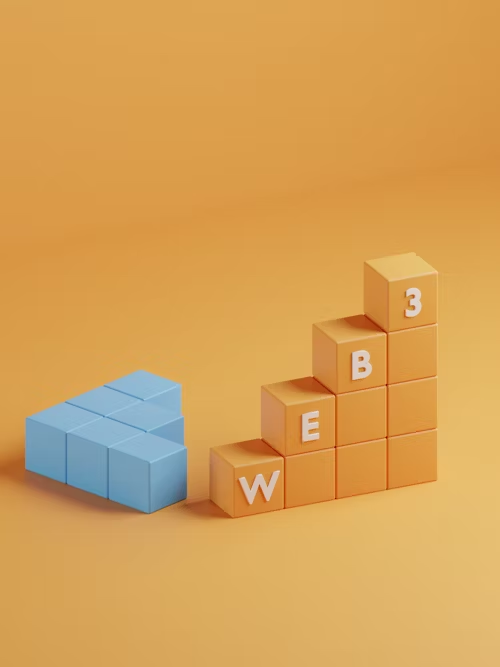
Welcome and don’t get rugged chad, get a load of these gems I’m about to drop.
As someone newly getting into the field of web3, crypto and blockchain, use this article as a tour guide as you sojourn the Decentralised Seas. We’ll be taking a dive through
- What is Web3
- What is Blockchain
- What is DeFi.
- What Fields or job roles exist in Web3
- The Web3 community guide; lingo, and communities with a rugged fanbase,
- Consensus Mechanisms
I get asked this question a lot, and I mean a lot, “as a beginner in web3, where does one start from?” or “if you could start your web3 journey from the beginning how would you go about that?”.
Finally, I answer that question in a concise and bold approach. Brace yourselves : )
What is Web3?
If you’re wondering, no we didn’t just skip to Web3, we started at…
Web1 (The Static Web): In the early days (1990s), the internet was primarily static, consisting of simple HTML pages with limited interactivity, the read-only internet, users could view information, but there was minimal engagement. After mass adoption of information technology, we landed at …
Web2 (The Social Web): Around the mid-2000s, Web2 emerged with the rise of social media and dynamic content. Platforms like Facebook, Twitter, and YouTube enabled user-generated content, social interactions, and collaboration, marking a tremendous shift toward more interactive and user-focused experiences. In this epoch of tech there was a craze in innovation and mass adoption, which eventually got us to…
Web2.5 (The Mobile Web): The proliferation of smartphones led to the mobile web, extending the reach of the internet. Mobile apps and responsive design became essential for a seamless online experience. According to trusted sources, 60% – 70% of the web is accessed through mobile phones. A phone in modern times is like a reliable companion; that goes everywhere you go. All these different phases or epochs of the web brought us inevitably to the feet of…
Web3 (The Decentralised Web): Currently evolving, Web3 emphasises proof of ownership, decentralisation, blockchain technology, and cryptographic principles. It aims to empower users by enabling peer-to-peer transactions, ownership of digital assets, and increased privacy through decentralised applications (dApps), blockchain, and smart contracts. Web3 utilises AI technology through smart contracts.
Web3 is the version of the Internet where we own our data, and eliminate lack of trust due to blockchain technology, thus attaining some levels of financial freedom.
What is a Blockchain ?
In simple words, a blockchain is a distributed and immutable digital ledger that is responsible for recording transactions and tracking the movement of digital assets on its network. Primarily, blockchains were used to track financial assets but today, there is a growing number of use cases as the blockchain is a fantastic way to store value. Blockchains have some key features that open up a new world of functionality, a concept often named ‘Web3’.
So what are these key features?
Key Features of a Blockchain Network
Blockchains have a lot of other interesting features. However, they all start with these two main pillars: distributed Ledger technology, and immutable records.
- Distributed Ledger Technology
Instead of hosting its information on a single centralised server, a blockchain distributes its ledger to each and every computer in the system. These computers are called nodes and they are responsible for storing, sharing, and recording information and the transfer of digital assets. This is the basis of “distributed ledger” technology, and it’s the only way in which blockchains can store information securely.
- Immutable Records
Next, a blockchain has a unique way of storing that information: within blocks. These blocks of new information are arranged in a chain, which is distributed across the network, hence the name ‘blockchain’. To clarify, this specific data structure ensures that it is impossible to alter information once included in the blockchain. These features make blockchains almost impossible to hack.
Types of Blockchain
There are several ways to build a blockchain network and there’s likely a bit more to it than you thought. When most people think of blockchains, they are referring to decentralised blockchains like Bitcoin. But it is worth mentioning this technology can also build centralised systems.
Just because blockchains allow for the peer-to-peer transfer and decentralised exchange of value, that doesn’t mean all blockchains operate in this way. Some blockchains are public, private, permissioned, or built by a consortium. Some are even a combination of some of these types.
So let’s understand the difference between different types of blockchain networks and why it matters.
- Private, Permissioned, and Consortium Blockchains
A permissioned blockchain is run by a single entity, such as a government or a company. As a result, the central entity can limit access to the system and who can operate a node. Plus, those who do operate nodes have a lot of power – power they could misuse.
- Permissionless and Public Blockchains
Conversely, a permissionless blockchain will allow anyone to operate a node in the network. In this system, there tend to be more participants and they could live anywhere in the world.
Want to learn more about cryptocurrency? Visit
